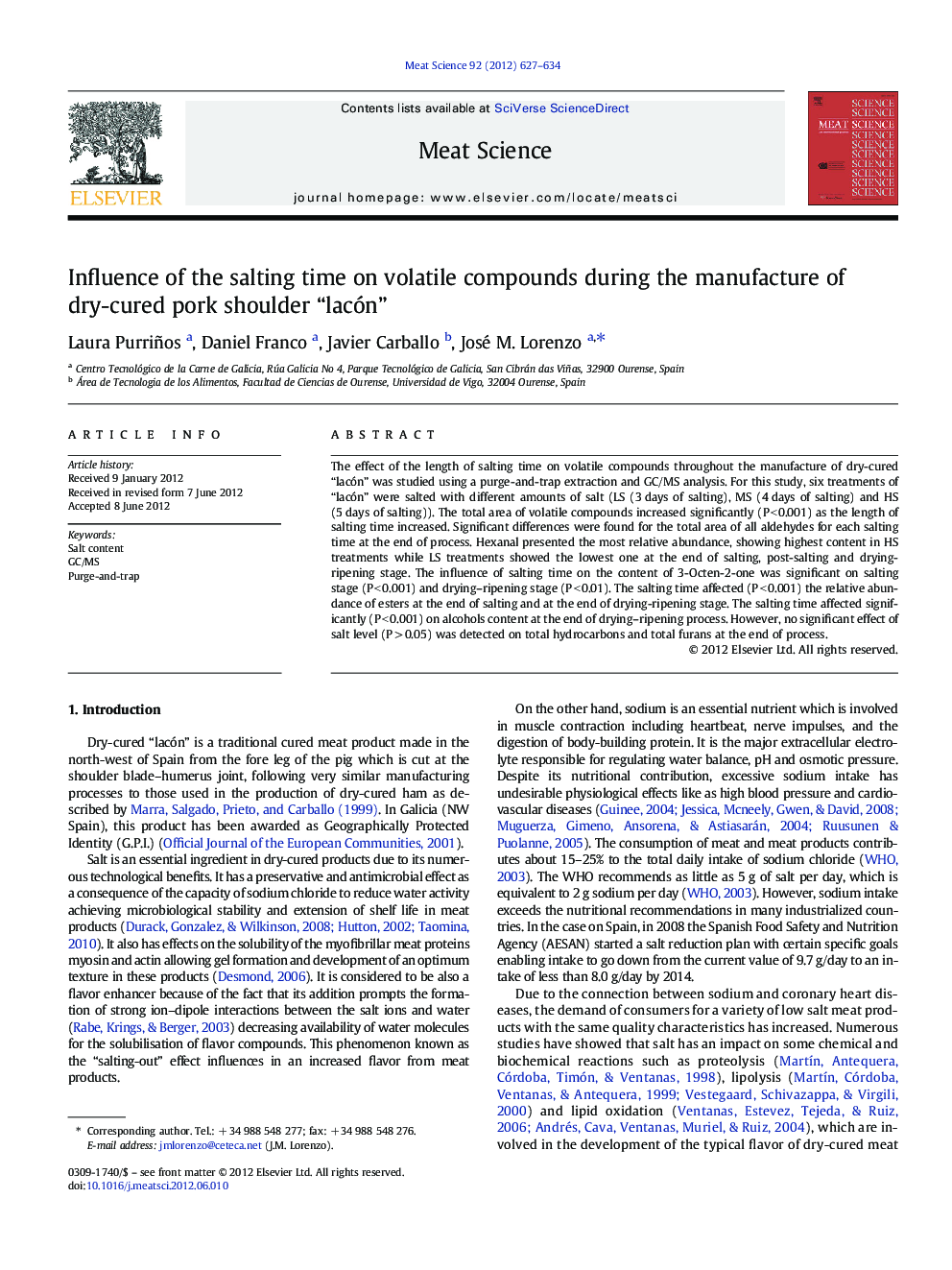| Article ID | Journal | Published Year | Pages | File Type |
|---|---|---|---|---|
| 5792047 | Meat Science | 2012 | 8 Pages |
The effect of the length of salting time on volatile compounds throughout the manufacture of dry-cured “lacón” was studied using a purge-and-trap extraction and GC/MS analysis. For this study, six treatments of “lacón” were salted with different amounts of salt (LS (3Â days of salting), MS (4Â days of salting) and HS (5Â days of salting)). The total area of volatile compounds increased significantly (PÂ <Â 0.001) as the length of salting time increased. Significant differences were found for the total area of all aldehydes for each salting time at the end of process. Hexanal presented the most relative abundance, showing highest content in HS treatments while LS treatments showed the lowest one at the end of salting, post-salting and drying-ripening stage. The influence of salting time on the content of 3-Octen-2-one was significant on salting stage (PÂ <Â 0.001) and drying-ripening stage (PÂ <Â 0.01). The salting time affected (PÂ <Â 0.001) the relative abundance of esters at the end of salting and at the end of drying-ripening stage. The salting time affected significantly (PÂ <Â 0.001) on alcohols content at the end of drying-ripening process. However, no significant effect of salt level (PÂ >Â 0.05) was detected on total hydrocarbons and total furans at the end of process.
⺠Increasing the length of salting time led to higher levels of volatile compounds. ⺠Salt content played a key role on dry-cured “lacón” volatile profile generation. ⺠NaCl contributes to higher levels of hexanal.
